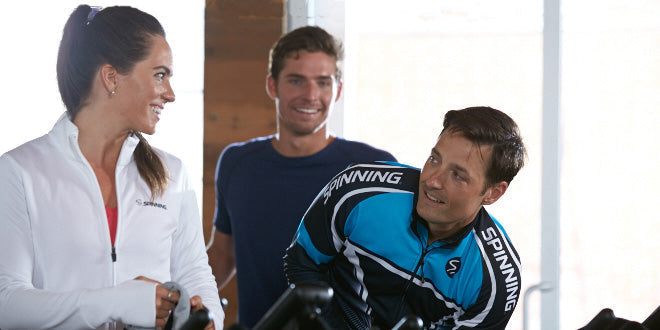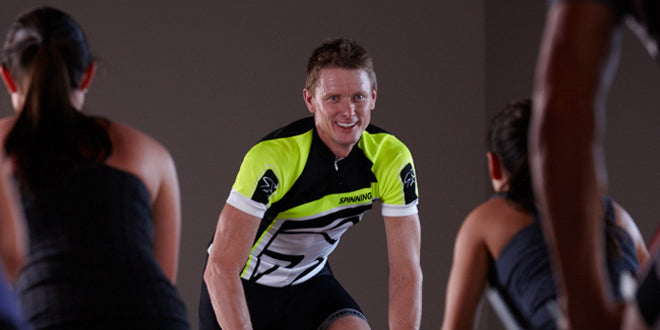By Kate Amos
Anyone who exercises regularly has likely developed a pre-workout routine. These habits can be a great way to mentally and physically transition into a workout, but sometimes what you don’t do can be just as important. Below are some tips about what to avoid before you jump on the bike, so that you can be sure you’re getting the most out of every ride:
Static stretching
Contrary to what you may have learned in high school gym class, static stretching before exercise may not be the best way to start your workout routine—although, this is dependent on the intensity of your workout. Research has shown the performing static stretching prior to high intensity workouts that require large amounts of strength and power may actually decrease performance. In such a situation, performing dynamic stretching may be more advantages prior to high intensity rides. Dynamic stretching has been an effective way to improve range of motion without decreasing high intensity performance (Behm, 2011).Start your ride by pedaling lightly, with a high cadence and low resistance for five to ten minutes, slowly increasing both your heart rate and your perceived effort. Once your blood is flowing and your muscles are warm, hop off the bike and complete a series of dynamic stretches, in which you perform movements through a controlled range of motion, such as hip circles, walking lunges, walking knee grabs and leg swings. (Clark & Lucett, 2014).
Over-hydrating
Hydration is vitally important for both health and performance, but overdoing it can be too much of a good thing. Guzzling a huge bottle of water or sports drink just before you head out the door can lead to bloating, sluggishness, and cramps. Instead, make hydration a priority throughout the day, sipping on water at regular intervals. Take the same approach while riding, staying ahead of your hydration needs with plenty of water, as well as an electrolyte-enhanced sports drink for particularly long or hot workouts.
Over-eating
Food is fuel, an essential building block of any athlete’s program, but over-eating just before a ride can lead to the same symptoms as over-hydrating. Your body uses energy and resources to digest food, and it takes six to eight hours to fully process what you eat, so skip the heaping plate of spaghetti just before your long weekend ride. To get the most out of your food, eat a medium-sized meal three hours before a workout, or have a small snack an hour before getting on the bike.
Under-eating
Not eating enough can be just as harmful as eating too much. Many people exercise with the goal of maintaining or losing weight, but starting a workout under-fueled can backfire. Not only are you more likely to over-eat after the workout is done, eating too little can make it difficult to maintain your planned duration and intensity, leading to fewer calories burned and poor recovery. Stay well-fueled with meals of medium portions and healthy ingredients, making sure that you are getting enough calories to truly benefit from all that hard work you put into your rides.
Drinking alcohol
We all know that drunk driving is bad, but drunk riding can be just as dangerous! Even a few drinks can drastically slow reaction times, so save the booze for your post-ride celebrations, making sure to include some extra water in your day to compensate for the dehydrating effects of alcohol. Fine-tuning your pre-workout routine can help to ensure that you maximize your riding experience, getting the most out of all you put into your rides. Taking care of your body before you ever touch the bike is a great first step towards creating the conditions your body needs to take care of you while you’re on the bike!For more ride dos and don’ts, subscribe to our newsletter today.
References
Behm, D. (2011). A review of the acute effects of static and dynamic stretching on performance. European Journal of Applied Physiology, 111(11), 2633-2651.Clark, M.A., & Lucett, S.C. (2014). NASM essentials of corrective exercise training. Burlington, MA: Jones and Bartlett Learning.






Leave a comment
This site is protected by hCaptcha and the hCaptcha Privacy Policy and Terms of Service apply.